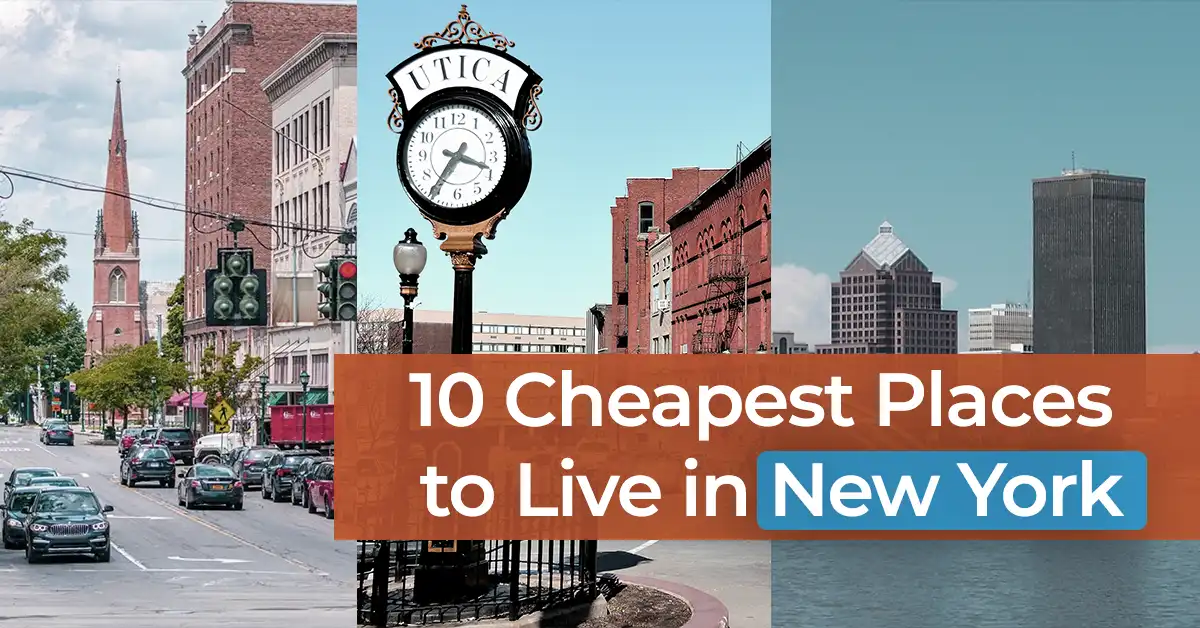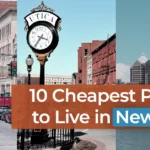Healthcare in the United States can be expensive, and for many, the cost of medical care is a significant concern. Whether you’re self-employed, between jobs, or simply looking for a budget-friendly option, finding affordable health insurance is crucial. But what is the cheapest health insurance in the USA? How can you get affordable healthcare without compromising on quality? In this comprehensive guide, we’ll explore the best affordable health insurance options in the USA, provide tips on how to save money, and review some of the top plans available.
Table of Contents
Why Affordable Health Insurance Matters
Healthcare costs in the U.S. are among the highest in the world. A single hospital visit or emergency procedure can lead to thousands of dollars in medical bills. Without insurance, these expenses can quickly become overwhelming. Affordable health insurance acts as a safety net, ensuring you have access to necessary medical care without breaking the bank. It’s not just about saving money—it’s about protecting your health and financial stability.
For many, the question isn’t just “What is the cheapest health insurance?” but also “How can I get the best value for my money?” The good news is that there are plenty of options available, from government programs to private insurers, designed to make healthcare accessible and affordable for everyone.
How to Get Affordable Healthcare in the US
- Explore Government Programs: If you’re on a tight budget, government-sponsored programs like Medicaid and the Children’s Health Insurance Program (CHIP) can provide low-cost or free coverage. Eligibility is based on income, so these programs are ideal for low-income individuals and families.
- Shop on the Health Insurance Marketplace: The Affordable Care Act (ACA) established Health Insurance Marketplaces where you can compare plans and find subsidies to lower your premiums. Depending on your income, you may qualify for tax credits that make coverage more affordable.
- Consider Short-Term Health Insurance: If you’re between jobs or waiting for other coverage to begin, short-term health insurance can be a cost-effective solution. These plans typically offer lower premiums but may have limited benefits.
- Look into Catastrophic Plans: Designed for people under 30 or those with a hardship exemption, catastrophic plans have low premiums and high deductibles. They’re ideal for those who want coverage for major medical expenses but don’t expect to need frequent care.
- Join a Health Sharing Plan: Health sharing ministries are faith-based organizations where members share healthcare costs. These plans are often more affordable than traditional insurance but may have restrictions on coverage.
- Check Employer-Sponsored Plans: If your employer offers health insurance, this is often one of the most affordable options. Employers typically cover a portion of the premium, reducing your out-of-pocket costs.
Also Read:
- 10 Most Affordable US Cities to Live in 2025-2026
- How to Find Affordable Housing in Expensive US Cities in 2025
- Simple Tips to Save Money While Living in the USA
- 15 Best Affordable Suburbs Near Major US Cities
- How to Live Affordably in California (2025–2026)?
- 20 Cheapest, Safest Places to Live in the US in 2025-2026
- Tips for Moving Across the USA on a Tight Budget
- 30 Cheapest Places to Retire Comfortably in the USA
- How College Students in the USA Can Live on a Budget?
- Top 10 Places to Buy Affordable Groceries in the USA
- How Dollar General Is Changing the Retail Game in Rural America?
Best Affordable Health Insurance Options in the USA
Now that you know how to find affordable healthcare, let’s dive into some of the best and cheapest health insurance options available in the USA. These plans have been highly rated for their affordability, coverage, and customer satisfaction.
1. Medicaid
Medicaid is a joint federal and state program that provides free or low-cost health coverage to millions of Americans. It’s designed for low-income individuals, families, pregnant women, and people with disabilities. Each state has its own eligibility requirements, so coverage and benefits may vary.
Why It’s Great: Medicaid offers comprehensive coverage, including doctor visits, hospital stays, prescription drugs, and preventive care, at little to no cost. It’s an excellent option for those who qualify.
Unlock Medicaid Benefits: Who Qualifies, What’s Covered, and How to Apply
2. Blue Cross Blue Shield (BCBS)
Blue Cross Blue Shield is one of the most trusted names in health insurance. They offer a range of plans, including ACA-compliant options, with varying levels of coverage and premiums. BCBS operates in all 50 states, making it a convenient choice for many.
Why It’s Great: BCBS plans are known for their extensive provider networks and excellent customer service. They also offer wellness programs and discounts on health-related products and services.
3. Kaiser Permanente
Kaiser Permanente is a top-rated health insurance provider that combines insurance and healthcare services under one roof. They offer affordable HMO plans with a focus on preventive care and wellness.
Why It’s Great: Kaiser Permanente is praised for its integrated care model, which ensures seamless coordination between doctors, specialists, and hospitals. Their plans often include low copays and no deductibles for certain services.
4. Ambetter
Ambetter is a popular choice for those shopping on the Health Insurance Marketplace. They offer a variety of ACA-compliant plans with competitive premiums and a wide range of benefits.
Why It’s Great: Ambetter plans are affordable and provide access to a large network of healthcare providers. They also offer additional perks like telehealth services and wellness programs.
5. Cigna
Cigna is a global health service company that offers affordable health insurance plans for individuals, families, and businesses. Their plans are known for their flexibility and comprehensive coverage.
Why It’s Great: Cigna provides a variety of plan options, including HMOs, PPOs, and high-deductible plans. They also offer 24/7 customer support and a robust network of healthcare providers.
6. UnitedHealthcare
UnitedHealthcare is one of the largest health insurance providers in the U.S., offering a wide range of plans to suit different budgets and needs. They are known for their innovative tools and resources that help members manage their health.
Why It’s Great: UnitedHealthcare offers affordable plans with extensive coverage options. Their online tools, such as cost estimators and telehealth services, make it easy to access care and save money.

Tips for Choosing the Best Affordable Health Insurance
- Compare Plans: Use online tools to compare premiums, deductibles, copays, and coverage options. Look for a plan that balances cost with the benefits you need.
- Check Provider Networks: Ensure your preferred doctors and hospitals are included in the plan’s network to avoid unexpected out-of-network costs.
- Consider Your Health Needs: If you have ongoing medical conditions or expect to need frequent care, a plan with higher premiums but lower out-of-pocket costs may be more cost-effective in the long run.
- Look for Additional Benefits: Some plans offer extras like dental, vision, or mental health coverage. These can add significant value to your policy.
- Read Reviews: Customer reviews can provide insights into the quality of care, customer service, and overall satisfaction with the insurance provider.
Finding affordable health insurance in the USA doesn’t have to be a daunting task. By understanding your options, comparing plans, and taking advantage of available resources, you can secure quality coverage that fits your budget. Whether you choose a government program like Medicaid, a trusted provider like Blue Cross Blue Shield, or a budget-friendly option like Ambetter, the key is to prioritize both affordability and coverage.
Remember, health insurance is an investment in your well-being. Don’t wait until you’re faced with a medical emergency to start looking for a plan. Take the time to explore your options today and ensure you and your family are protected. Affordable healthcare is within reach—you just need to know where to look.
By following this guide, you’ll be well on your way to finding the best and cheapest health insurance in the USA. Stay healthy, stay informed, and make the choice that’s right for you!
FAQ:
What is the cheapest health insurance in the USA?
The cheapest health insurance options in the USA typically include government programs like Medicaid and CHIP, which provide free or low-cost coverage to eligible individuals and families. Other affordable options include catastrophic plans, short-term health insurance, and health sharing ministries. The exact cheapest plan for you will depend on your income, location, and healthcare needs.
How can I get affordable healthcare in the US?
You can get affordable healthcare in the US by exploring government programs like Medicaid, shopping for plans on the Health Insurance Marketplace, considering short-term or catastrophic plans, joining a health sharing ministry, or checking if your employer offers health insurance. Additionally, you may qualify for subsidies or tax credits to lower your premiums.
Who is eligible for Medicaid?
Medicaid eligibility is based on income and varies by state. Generally, low-income individuals, families, pregnant women, children, and people with disabilities may qualify. You can check your eligibility by visiting your state’s Medicaid website or the Health Insurance Marketplace.
What is a catastrophic health insurance plan?
Catastrophic health insurance plans are designed for people under 30 or those with a hardship exemption. These plans have low premiums and high deductibles, making them ideal for covering major medical expenses but not routine care. They are a good option for those who want protection against significant healthcare costs.
Are short-term health insurance plans a good option?
Short-term health insurance plans can be a good option if you’re between jobs, waiting for other coverage to begin, or need temporary coverage. These plans are generally more affordable but offer limited benefits and may not cover pre-existing conditions. They are not a long-term solution but can provide temporary financial protection.
What are health sharing ministries?
Health sharing ministries are faith-based organizations where members share healthcare costs. These plans are often more affordable than traditional insurance but may have restrictions on coverage, such as excluding certain treatments or requiring members to adhere to specific religious beliefs.
How do I qualify for subsidies on the Health Insurance Marketplace?
To qualify for subsidies (premium tax credits) on the Health Insurance Marketplace, your income must fall within a certain range based on the federal poverty level. Generally, individuals and families earning between 100% and 400% of the federal poverty level may be eligible. You can check your eligibility when applying for coverage on the Marketplace.
Can I get health insurance if I’m self-employed?
Yes, self-employed individuals can purchase health insurance through the Health Insurance Marketplace, directly from insurers, or through professional organizations. You may also qualify for subsidies to lower your premiums. Additionally, you can explore options like short-term plans or health sharing ministries.
What happens if I don’t have health insurance?
If you don’t have health insurance, you may face penalties in some states, though the federal penalty was eliminated in 2019. More importantly, you’ll be responsible for paying all medical expenses out of pocket, which can be financially devastating in the event of a serious illness or injury.
Can I switch health insurance plans if I find a cheaper option?
Yes, you can switch health insurance plans during the annual Open Enrollment Period (typically November 1 to December 15) or during a Special Enrollment Period if you experience a qualifying life event, such as losing job-based coverage, getting married, or having a baby.
Are there free healthcare options in the USA?
Yes, Medicaid and CHIP provide free or low-cost healthcare to eligible individuals and families. Additionally, community health centers and free clinics offer basic medical services at little to no cost for those who qualify based on income.












